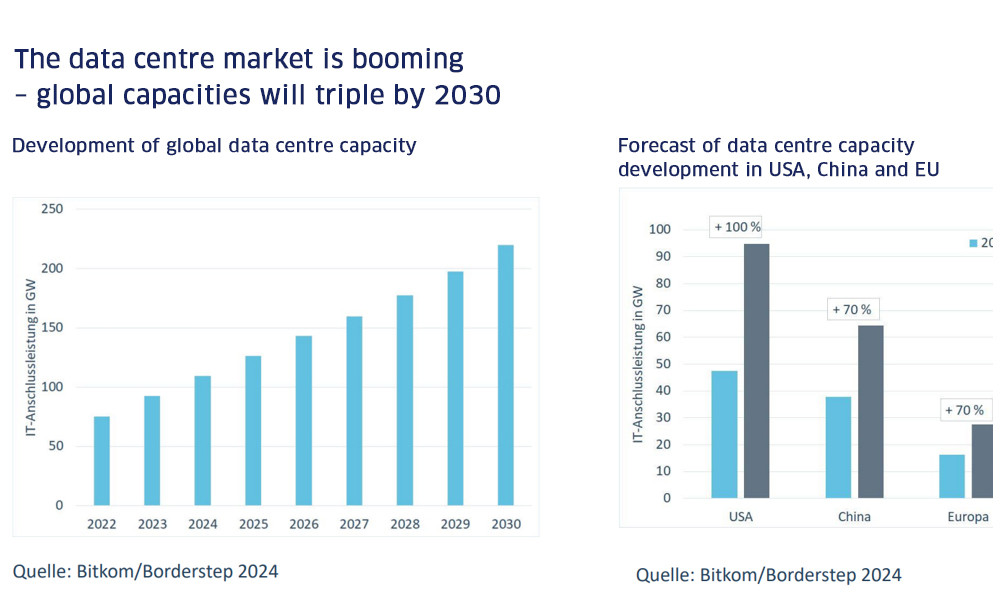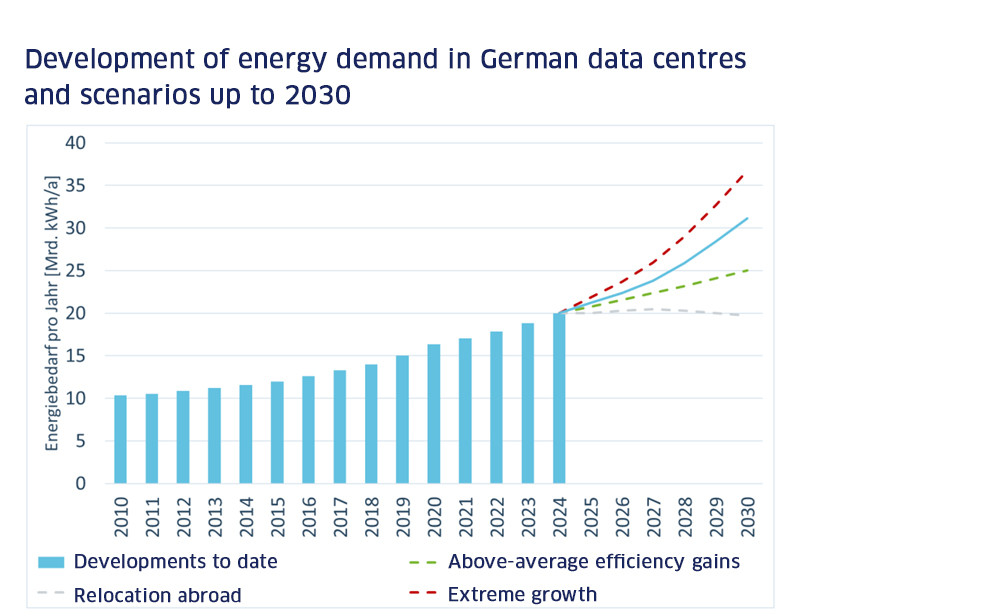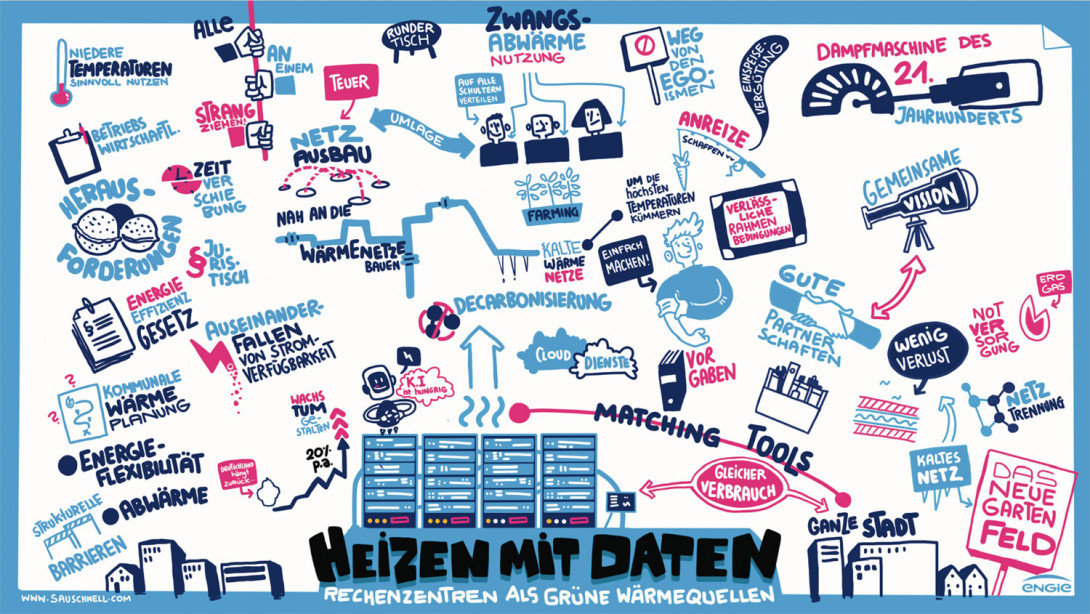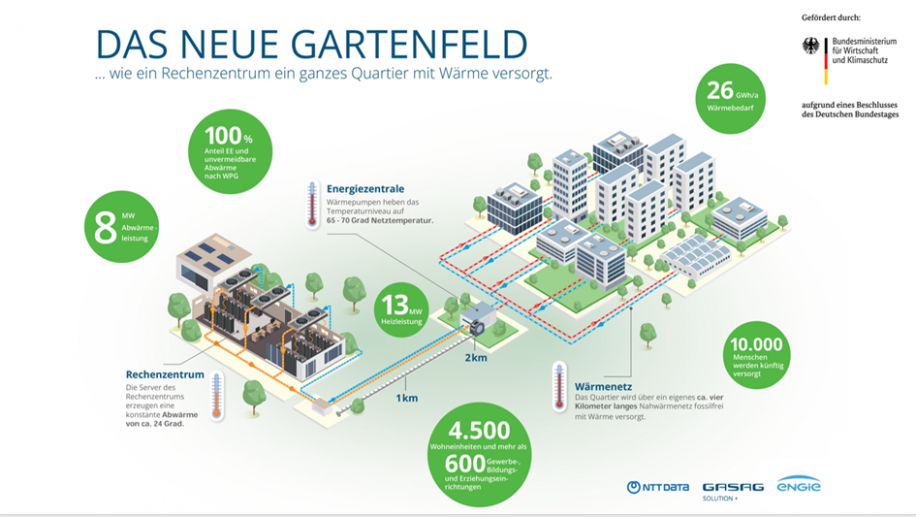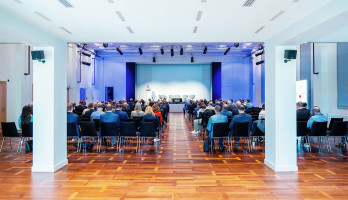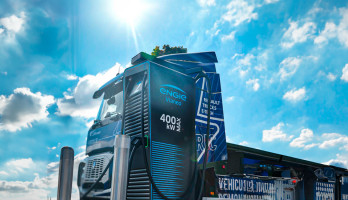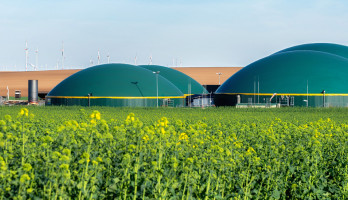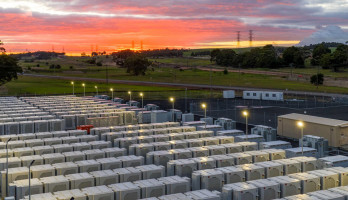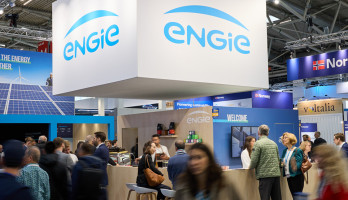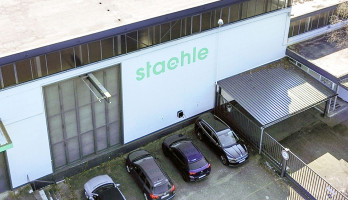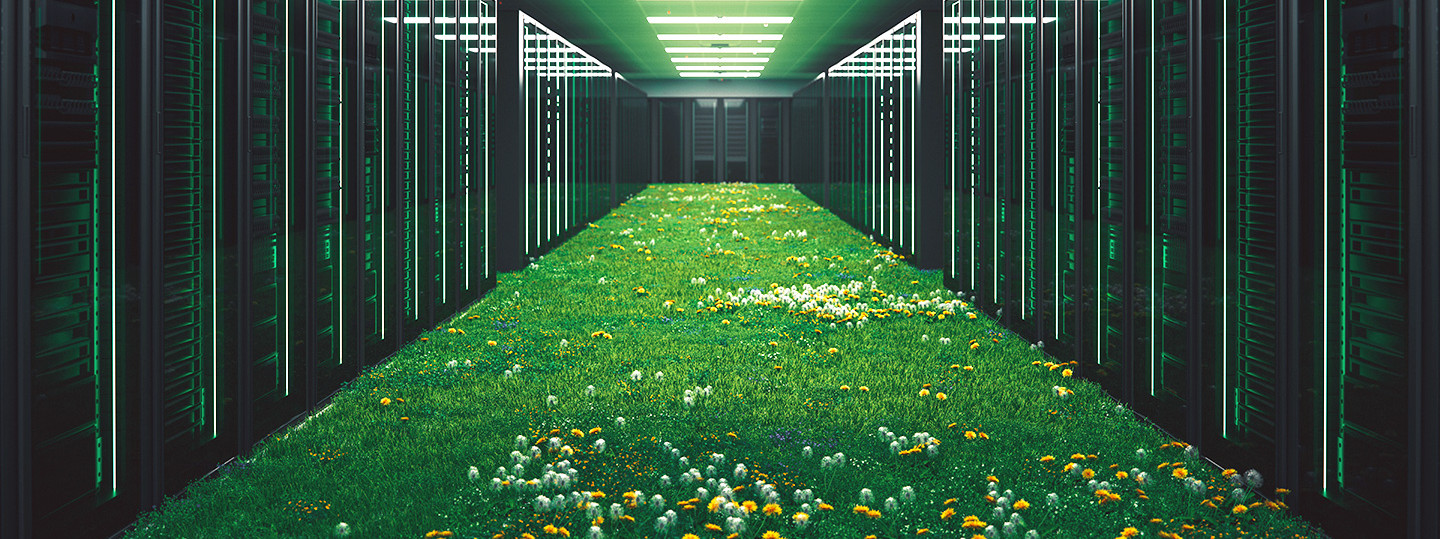
Heating with data: Berlin Energy Days 2025 showcase data centres as green heat sources of the future
Data centres consume a lot of electricity - but they also supply heat. In our panel at the Berlin Energy Days 2025 entitled "Heating with data | Data centres as green heat sources - opportunities and challenges for the use of waste heat in municipal areas", we took our audience on an exciting journey. This showed what contribution the increasing demand for data centre power can make to the local heating transition.
The event was moderated by Christian Noll, Managing Director of the German Business Initiative for Energy Efficiency (DENEFF).
Digital hunger meets the energy transition
In his keynote speech, Dr Ralph Hintemann (Borderstep Institute) impressively demonstrated that the market for data centres is growing rapidly – IT performance in Germany is set to double between 2022 and 2030. This will also increase energy requirements and the pressure to find solutions for the intelligent use of the waste heat generated.
Chart shows increase in global data centre capacity from 2022 to 2030 and forecasts for the USA, China, Europe and Germany.
Current developments in the data centre market make it clear that global capacity is expected to triple between 2022 and 2030. Between 2024 and 2030, capacity is expected to double in the United States and grow by 78% in Germany. Germany is positioning itself as Europe's largest data centre location – with ambitious political goals designed to secure its status as a beacon. This is of great importance for Europe's competitiveness and sovereignty. In the past, Europe has fallen behind the US and China. ‘The EU now aims to triple local data centre capacity over the next 5 to 7 years,’ says Dr Hintemann.
The increase in capacity is taking place in the cloud infrastructure in particular, which is leading to a significant increase in energy requirements according to the latest figures from Bitkom and Borderstep: By 2030, German data centres alone will consume over 30 billion kWh of electricity per year.
How are data centres in Germany developing? "Frankfurt remains the top data centre location in Germany - but Berlin-Brandenburg is also becoming increasingly important, with major investments and a clear trend," says Dr Hintemann.
The diagram shows the development of energy demand in data centres in Germany between 2010 and 2024, as well as possible developments up to 2030. © Bitkom/Borderstep 2024
At the same time, there is enormous potential for the heat transition: Dr Ralph Hintemann showed at the Berlin Energy Days 2025 that up to 1 billion kWh of waste heat could already be usable by 2030, 3 billion kWh by 2035 and 10 billion kWh by 2045. In 10 years, around 300,000 homes could be supplied with waste heat from data centres. These figures underline the pressure to act, but also the opportunity to see data centres as system-relevant components of municipal heat planning in the future.
Legal requirements intensify the pressure to act
Prof Dr Peter Radgen (IER University of Stuttgart, GDA) presented the current and future legal framework conditions: The amended Energy Efficiency Act (EnEfG) stipulates strict PUE limits and mandatory waste heat utilisation for new data centres from 2027. The industry is responding - but technical and economic implementation remains a challenge.
"Data centres are the steam engine of the 21st century. They are massively changing the way we do business - faster, more efficiently, but with a negative environmental impact." Their increasing number and capacity not only make them key players in the digital economy, but also decisive factors for decarbonisation and the energy transition.
With the amended requirements of the Energy Efficiency Act (EnEfG) from 2027, which prescribes strict PUE limits and mandatory waste heat utilisation for new data centres, the pressure on the industry will continue to increase. Waste heat, which has remained largely unutilised to date, can now serve as a valuable resource for municipal heat supply - but implementing these requirements presents operators with major technical and economic challenges.
Prof. Dr Radgen emphasised that the Energy Reuse Factor (ERF) must be at least for new buildings from 2026 and should rise to by 2028. The use of renewable electricity will also be mandatory for all data centres from 2027. These requirements show how data centres can contribute not only to the digital infrastructure, but also to a sustainable energy supply.
However, despite the progress made, many challenges remain: There are still structural barriers in terms of waste heat usability, a lack of heat networks and technical limitations. "Waste heat utilisation from data centres is gaining in importance, but is currently still more of a nice-to-have than a must-have. The challenge remains to reconcile the availability of electricity with the heat consumers," explains Prof Dr Radgen.
Discussion: All players must pull together
In the lively panel discussion between Stefan Scherz ( empact ), Dr Béla Waldhauser (Telehouse Deutschland GmbH), Paul Fay ( LandesEnergieAgentur Hessen ), Valentina Fröhlich ( AwaNetz ) and Axel Popp (ENGIE), it became clear that without better coordination between local authorities, data centre operators and energy suppliers, waste heat utilisation will remain a niche topic. Stakeholder management, planning security and pragmatic solutions were identified as key success factors.
The panel discussion made it impressively clear that coordinated cooperation between different players is necessary for the successful use of waste heat from data centres as part of the heat transition. Stefan Scherz (empact) emphasised that the heat transition should actually be successful and efficient. He highlighted various challenges:
- Technical problems:
Waste heat temperatures often do not match the requirements for utilisation.
- Communicative barriers:
Stakeholders often do not realise that the others exist, which makes cooperation more difficult.
- Time shifts:
One player is already well advanced, while the other is still at the beginning, which leads to missed time windows.
- Business challenges:
Goal: Low costs and high efficiency, but this is not always realisable. Grid charges are often low and discounts for data centres are high, which makes the savings from waste heat utilisation difficult to calculate.
- Legal questions:
Uncertainties in contract design and the interfaces between suppliers and users, particularly with regard to the transfer of heat.
His answer: the matching platform Bytes2Heat, which was developed in collaboration between empact, DENEFF (German Business Initiative for Energy Efficiency) and the University of Stuttgart to connect the various players.
The challenge lies in the cooperation of those involved: if not everyone pulls together, the use of waste heat will fail, said Dr Béla Waldhauser from Telehouse Deutschland GmbH. He emphasised that in addition to the data centres, property owners, heating network operators, local authorities and politicians would also have to join forces in order to use waste heat effectively
However, "currently only data centre operators are obliged to examine the possibility of using waste heat - I would be happy if municipal utilities that could potentially use heat also had a similar obligation and quota - then many things would be easier," says Paul Fay from the State Energy Agency of Hesse. "This is how we currently work in Hesse: We bring the groups together. We draw up concepts with the data centre operators and local authorities and then present them to those who can implement them." He sees the decarbonisation of the heat supply as one of the biggest challenges and pointed out that the acceptance of waste heat from data centres will increase in the future - especially with regard to the development of electricity and gas prices. One of the key issues remains the economic viability of waste heat utilisation, especially in regions with a lack of heating networks.
Axel Popp from ENGIE also saw communication as one of the most important points at the Berlin Energy Days 2025: "It can't be a one-way street and we have to stop being egotistical. There is definitely a need for intermediaries like us between investors, local authorities, industrial companies and the housing industry. However, this is where public procurement law comes into play again, for example. Here, too, I would like to see a little more flexibility."
He also emphasised that in order to decarbonise the heat supply from data centres, all parties involved must leave their comfort zones and be prepared to make compromises - for example in terms of flow temperatures or the time periods for the provision of waste heat. He also explained that technological progress in the form of high-temperature heat pumps and the energy efficiency of data centres were also important factors in overcoming the challenges of waste heat utilisation.
Valentina Fröhlich from AwaNetz emphasised the need to make waste heat utilisation mainstream: "We can do this if we all work together. It's up to the consumers, but also the waste heat sources and the municipalities. In other words, there are actually three different players that need to be brought together at different points." In this context, she emphasised the role of knowledge, networks and solution-oriented cooperation. As part of the AwaNetz project, new platforms are being developed to bring together waste heat sources and consumers. This could significantly accelerate the exchange and realisation of projects.
In conclusion, it is clear that the use of waste heat from data centres and its integration into municipal heating systems is a complex challenge that can only be successfully mastered through close cooperation between all stakeholders involved - from data centres to municipalities and energy suppliers.
The Neighbourhood "Das Neue Gartenfeld" - a model project for the heat transition
The project Das Neue Gartenfeld in Berlin-Spandau was presented by Niklas Wiegand (ENGIE), Dr Eggers (NTT) and Leif Cropp (GASAG) as part of the panel at the Berlin Energy Days 2025. It is a forward-looking neighbourhood that impresses with innovative concepts in energy supply and waste heat utilisation. The plan is to build 4,500 flats and 600 commercial units on an area of 31 hectares, providing space for around 10,000 people. The use of 100 % renewable energies plays a central role in this. The project aims to save 6,000 tonnes of CO₂ per year.
One innovative aspect of the project is the use of waste heat from the NTT data centre, which is connected to the district via a heat network structure. The waste heat from the data centre is used as the main heat generator for heating and hot water via heat pumps, which provide the heat via Power2Heat technology and water-to-water heat pumps. Part of the electricity requirement is covered by photovoltaic systems and, at peak times, buffer storage or a gas boiler (H2-ready) take over the remaining heat supply.
The neighbourhood is supplied by a heating network with a temperature of 65/35 °C. The supply of heat from the heat pumps is scheduled for December 2026. In addition, a long-term heat supply contract of more than 20 years will be concluded, guaranteeing planning security for the project. With an investment in the high double-digit million range, Das Neue Gartenfeld is focusing on a sustainable, innovative and decentralised energy supply that can also serve as a model for future urban districts.
What the Berlin Energy Days 2025 made clear
Data centres must become an integral part of municipal heat planning from the outset. While the potential for using waste heat from data centres exists, it is clear that a great deal of effort is still required to transfer this into regular operation. Pilot projects such as Das Neue Gartenfeld in Berlin-Spandau are promising. But several prerequisites are needed to turn such individual projects into comprehensive solutions.
Political guidelines and regulatory measures are proving to be essential in order to steer the industry in the right direction. The amended Energy Efficiency Act is already providing important impetus, but additional economic incentives are needed to ensure the economic viability of waste heat utilisation. It is also clear that better coordination of all stakeholders involved - from data centres to local authorities and energy suppliers - is necessary in order to drive the heat transition forward quickly.
It was repeatedly emphasised in the discussion that the heat transition cannot be successfully implemented without the integration of data centres and their waste heat. The heat transition needs data - and the data centres need the heat transition. It will only be possible to establish waste heat from data centres as a valuable resource for the municipal heat supply through close cooperation between all stakeholders, the use of intelligent platforms to network heat sources and consumers and the continuous further development of technologies.
The Berlin Energy Days 2025 once again highlighted how closely the topics of digitalisation and sustainable heat supply are linked. If this link can be implemented consistently, the way can be paved for a successful energy transition in which data centres and their waste heat act as central building blocks for a climate-friendly energy future.
